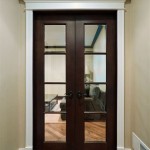How Much Does An Interior Designer Make Per Year?
The annual salary of an interior designer is a multifaceted topic, influenced by a range of variables including experience, location, specialization, education, and employment type. Understanding these factors is crucial for those considering a career in interior design or for designers seeking to benchmark their own earnings.
Numerous sources offer salary data for interior designers, providing a general range that can serve as a starting point. However, these figures often represent averages and may not accurately reflect the potential earnings for every individual. A comprehensive understanding requires delving into the nuances that shape compensation in this profession.
Key Factors Influencing Interior Designer Salaries
Several key determinants dictate the earning potential of an interior designer. These factors interact in complex ways, shaping individual salary outcomes. A thorough examination of these elements provides a more accurate understanding of the earning landscape.
Experience Level and Skill Set
Experience constitutes a significant determinant of salary in almost every profession and interior design is no exception. Entry-level designers, typically with less than three years of experience, generally earn less than their more seasoned counterparts. As designers accumulate experience, their skill set expands, and their ability to handle complex projects increases, driving up their market value and, consequently, their salaries.
Senior designers, with ten or more years of experience, command higher salaries due to their expertise, established client relationships, and proven track record of successful projects. Furthermore, specialization can lead to a boost in earnings. Designers specializing in high-demand areas such as sustainable design, healthcare design, or luxury residential design often enjoy higher compensation.
Beyond years of experience, specific skills can also influence earnings. Proficiency in computer-aided design (CAD) software, building information modeling (BIM), and visual rendering programs is highly valued. Knowledge of building codes, accessibility standards, and project management principles further enhances a designer's marketability and earning potential. Strong communication and interpersonal skills are also crucial for building client relationships and managing projects effectively, contributing to long-term success and increased earnings.
Location and Cost of Living
Geographic location significantly impacts the cost of living and, subsequently, salary levels. Interior designers working in major metropolitan areas with a high cost of living, such as New York City, San Francisco, or Los Angeles, typically earn more than those in smaller towns or rural areas. This difference reflects the higher demand for design services in urban centers, as well as the increased cost of living that employees must offset.
However, a higher salary in a major city does not automatically translate to a better standard of living. The cost of housing, transportation, and everyday expenses may be significantly higher, potentially negating the benefit of a larger paycheck. Therefore, designers must carefully consider the cost of living when evaluating job offers in different locations.
Regional economic conditions also play a role. Areas with strong construction and real estate markets tend to have a higher demand for interior designers, driving up salaries. Conversely, regions experiencing economic downturns may see a decrease in demand and lower compensation levels. Understanding the economic landscape of a particular area is crucial for assessing the potential earning opportunities for interior designers.
Employment Type and Firm Size
The type of employment arrangement also affects an interior designer's income. Designers may work as employees of established firms, independent contractors, or freelancers. Each employment model offers distinct advantages and disadvantages in terms of compensation and benefits.
Employed designers typically receive a fixed salary, along with benefits such as health insurance, paid time off, and retirement contributions. The stability and benefits offered by employment can be attractive, particularly for those seeking job security. Salaries in this type of position often depend on the size and reputation of the firm. Larger, more established firms often pay higher salaries and offer more comprehensive benefits packages.
Independent contractors and freelancers, on the other hand, have greater control over their projects and schedules but also bear the responsibility for managing their own finances and securing their own health insurance and retirement plans. Their income is directly tied to the number of projects they secure and their ability to negotiate favorable rates. While this arrangement can offer the potential for higher earnings, it also carries greater risk and uncertainty. Successful freelancers must possess strong business acumen, marketing skills, and the ability to manage their finances effectively.
The size of the design firm also often dictates salary scales. Larger firms usually have more resources to offer competitive compensation packages and may have opportunities for advancement within the organization. Smaller firms may offer greater flexibility and a more collaborative work environment, but they may not be able to match the salaries offered by larger competitors.
Estimating Average Interior Designer Salaries
While precise figures vary based on the factors outlined above, it is possible to provide a general estimate of average interior designer salaries. Data from various sources, including the U.S. Bureau of Labor Statistics (BLS), industry associations, and online salary databases, suggest a median annual salary range for interior designers. It is important to consult several sources and understand the limitations of each data set when interpreting these figures.
According to the BLS, the median annual wage for interior designers was approximately $61,000 as of May 2022. This figure represents the midpoint of the salary range, with half of interior designers earning more and half earning less. However, it is important to note that this is a national average and may not accurately reflect salaries in specific locations or for designers with specialized skills.
Other salary databases, such as Payscale, Salary.com, and Glassdoor, provide similar data, but the specific numbers may vary slightly. These sources often allow users to filter salary data by experience level, location, and other relevant factors, providing a more personalized estimate. For example, Salary.com reports the average salary for an interior designer in New York City as significantly higher than the national average, reflecting the higher cost of living and greater demand in that market. It is also important to note that these figures are self-reported by individuals, and the reliability of the data may vary.
Professional organizations such as the American Society of Interior Designers (ASID) also conduct salary surveys among their members. These surveys provide valuable insights into compensation trends within the industry and can be a useful resource for designers seeking to benchmark their own earnings. ASID survey data often breaks down salary information by job title, experience level, and firm size, providing a more detailed and nuanced picture of the compensation landscape.
Strategies for Increasing Earning Potential
Interior designers seeking to increase their earning potential can employ various strategies. These strategies typically involve enhancing their skills, expanding their network, and positioning themselves for career advancement.
Pursuing Advanced Education and Certifications
Obtaining a bachelor's or master's degree in interior design from an accredited program can significantly enhance a designer's marketability and earning potential. Formal education provides a strong foundation in design principles, technical skills, and professional practices. Furthermore, advanced degrees can open doors to specialized roles and leadership positions within design firms.
Professional certifications, such as the National Council for Interior Design Qualification (NCIDQ) certification, demonstrate a designer's competency and commitment to the profession. NCIDQ certification is often required for licensure in many states and can improve a designer's credibility and earning power. Other relevant certifications, such as LEED accreditation for sustainable design, can also enhance a designer's skill set and market value.
Developing a Strong Portfolio and Reputation
A strong portfolio is essential for showcasing a designer's skills and experience to potential clients and employers. The portfolio should include high-quality photographs or renderings of completed projects, demonstrating the designer's ability to create innovative and functional spaces. Regularly updating the portfolio with new and impressive projects is crucial for maintaining a competitive edge.
Building a strong reputation within the industry is also important for attracting new clients and securing lucrative projects. Networking with other designers, architects, contractors, and industry professionals can lead to valuable referrals and collaborations. Participating in industry events, such as conferences and trade shows, can also help designers to expand their network and build their professional brand.
Online presence is also crucial; a professional website and active social media profiles can help designers to showcase their work and connect with potential clients and employers. Regularly posting engaging content, such as design tips, project updates, and industry news, can help to establish a designer's expertise and build a following.
Negotiating Salary and Benefits Effectively
Effective negotiation skills are essential for securing a fair salary and benefits package. Designers should research industry salary standards and be prepared to articulate their value to potential employers. Highlighting their skills, experience, and accomplishments can help to justify a higher salary demand.
In addition to salary, designers should also negotiate for benefits such as health insurance, paid time off, retirement contributions, and professional development opportunities. A comprehensive benefits package can significantly impact a designer's overall compensation and quality of life.

How Much Do Interior Designers Make

How Much Do Interior Designers Make

Hiring An Interior Home Designer Design Cost Questions

How Much Does An Interior Designer Make Great Tips Archid

How Much Do Interior Designers In The Us Make Decoholic

About The Creative Career Of Interior Designers How Much They Make Design Village

Interior Designers Occupational Outlook Handbook U S Bureau Of Labor Statistics

How Much Do Interior Designers In The Us Make Decoholic

Chairish S Annual Designer Survey Finds 70 Of Interior Designers Are More Vintage Today Than A Year Ago Furniture World

Salary Scales Vs Abroad Architects Interior Graphic Project Manager Rtf Rethinking The Future
Related Posts








